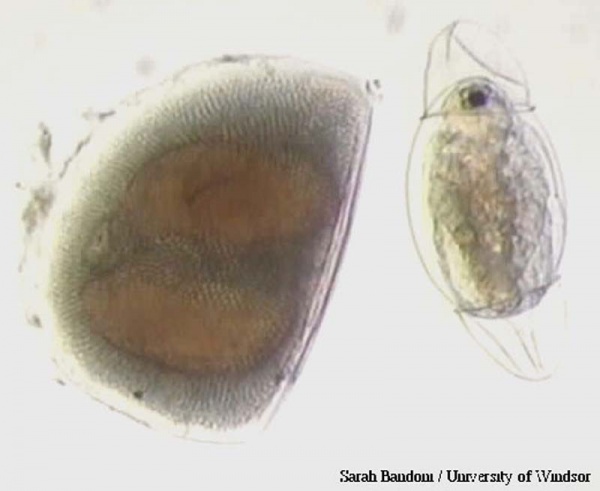Facts About Daphnia
Daphnia, commonly known as water fleas, are diminutive crustaceans ranging from 0.2 to 5 millimeters in length. They derive their nickname from their distinctive, erratic swimming style, which resembles that of fleas. Belonging to the order Cladocera, Daphnia inhabit various aquatic environments, from acidic swamps to freshwater lakes and ponds. The most prevalent species are Daphnia pulex and Daphnia magna.
These minute organisms possess a unique appearance, characterized by their segmented bodies enclosed in a translucent carapace. They also feature compound eyes, antennae, and minute hair-like structures on their abdomens. Scientists are particularly fond of studying Daphnia due to their transparent exoskeleton, which allows easy observation of their internal organs and physiological processes. As filter feeders, Daphnia primarily consume algae and organic debris.
Most Daphnia species reproduce through a process called cyclical parthenogenesis, alternating between asexual and sexual reproduction. Under adverse environmental conditions, they produce resting eggs to ensure their survival. In aquatic ecosystems, Daphnia play a pivotal role as a crucial food source for many organisms.
Regrettably, several Daphnia species are threatened, with some even listed as vulnerable by the International Union for Conservation of Nature (IUCN). Beyond their ecological significance, Daphnia are utilized in various fields. They are popular as live food in fish-keeping, are integral to toxicity testing, and assist scientists in studying environmental impacts such as climate change and UV radiation.
However, invasive Daphnia species can disrupt local ecosystems by developing defenses against predators, thereby destabilizing the natural balance of freshwater habitats. It is imperative to take measures to prevent the spread of these invasive species to protect the biodiversity of our aquatic environments.
